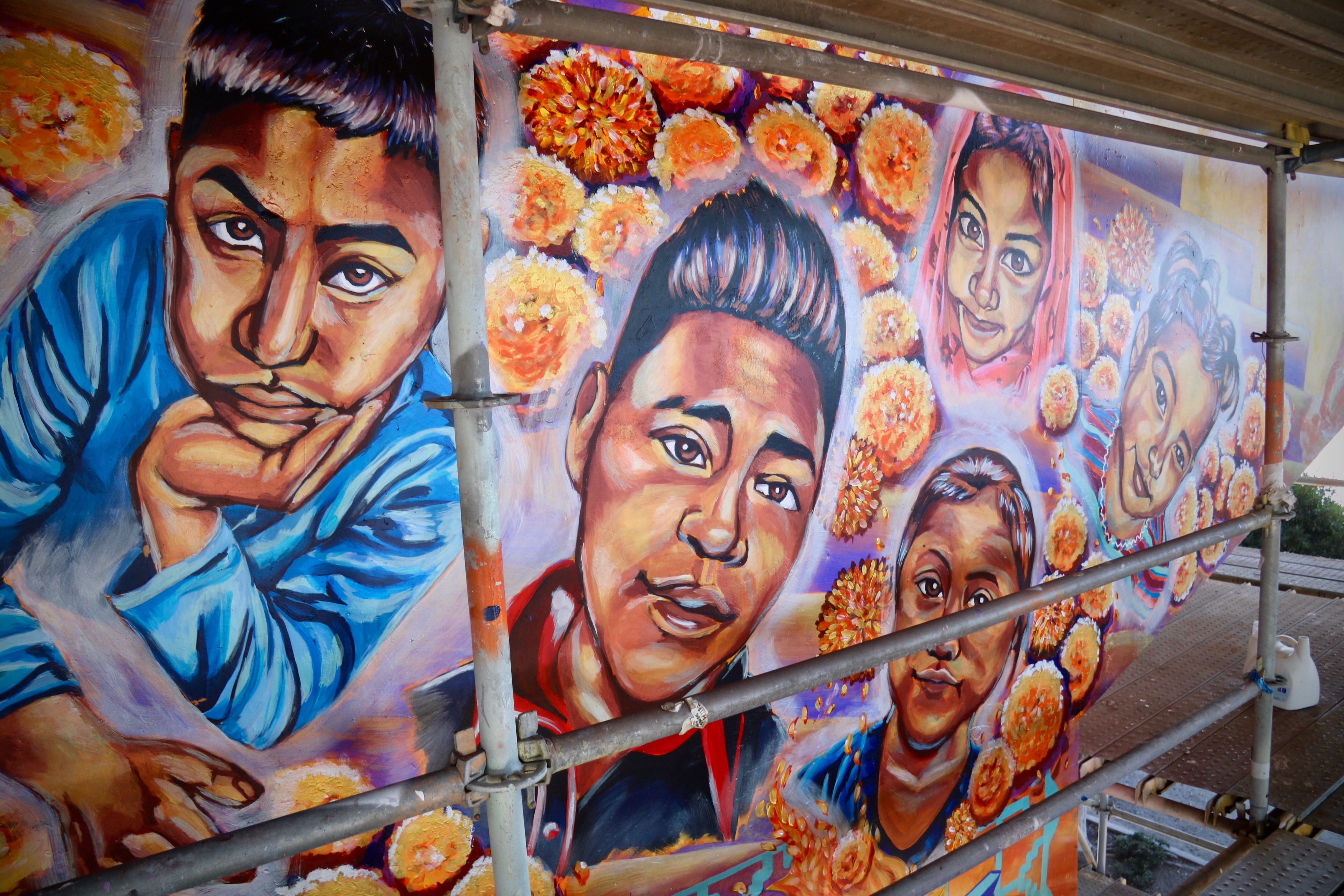San Diego Man Killed by Border Agents Remembered at Chicano Park

This is an independent opinion. Have one of your own? Write it! Email it to hoa@ivn.us.
At San Diego’s iconic Chicano Park in the Barrio Logan neighborhood, a group of artists, led by renowned Chicano muralist Victor Ochoa, have finished placing the last brushstrokes on a large-scale 50-foot, double-columned mural meant to memorialize Anastasio Hernandez Rojas. Rojas was a 26-year San Diego resident who border agents beat to death 10 years ago at the San Ysidro border crossing on May 28, 2010.
Two local organizations, Alliance San Diego and the American Friends Service Committee, commissioned the mural as the 10th anniversary that led to Rojas’s untimely death was fast approaching. The COVID-19 pandemic benched the muralists who delayed the work for several months, beyond the anniversary date.
Rojas was a father of five when he was ruthlessly beaten and Tasered by Customs and Border Protection (CBP) and Immigration and Customs Enforcement (ICE) agents. Over a dozen agents left Rojas brain dead as many more looked on. He died two days later at a local hospital. While family members won a civil case, the agents involved have never been held accountable for their actions. Recently, the Inter-American Commission on Human Rights, an international body that protects human rights, decided to take on what could be the first known extrajudicial killing case involving the United States.

The brutality of the incident, caught on video, displayed the impunity border agents have enjoyed for decades. Locally, the violent incident caused an uproar because it was emblematic of every other unresolved abuse of authority case involving border agents.
“We cannot rest easy while the people who murdered your loved ones have not been brought to justice,” stated Maria Puga, Rojas’s widow, a few years ago at a rally. Since the incident that lead to Rojas’s death, border agents have been involved in more than 100 fatalities where abuse of authority is alleged.
In recent years, children have died under the watch of Border Patrol as a result of abusive incarceration practices and medical neglect. It was for that reason that the muralists chose to include five portraits of those children as part of the imagery. Bright orange cempasuchil flowers, commonly used for Day of the Dead events in Mexico, emblazoned with purple hue highlights surround those children at the top of one of the columns.
At a separate part of the mural, Jakelin Caal Maquin, a 7-year old who died in Border Patrol custody in December 2018, is painted inside an ice cube which is melting at the bottom. This is meant to suggest hope for a future where ICE is no longer a threat to migrants in the United States. At two separate locations, the artists painted the father and daughter that drowned in the Rio Grande in June 2019. One of the paintings inverts them upwards to suggest they are traveling to the spirit world.

The conceptual design for the mural took six months to develop. The artists consulted with Rojas’s family in discussing what images would appropriately convey a storyline about the violence that ended Rojas’s life, but also about the resiliency and resistance the family has asserted despite such injustice. On the west side of the mural, the top focal point is an airbrushed remake of an iconic photograph by the established photographer Platon of Maria holding her two youngest children, while on the east side of the mural, the artists remade Miles MacGregor’s pencilized rendition of Rojas’s portrait.
Rojas’s and Maria’s children are a significant component of the mural. On the archway that connects the two 50-foot concrete columns, three of Rojas’s and Maria’s children appear as angels. They are the bridge between the west and east that tie their parents together. Rojas’s parents also are an important element to the mural. They appear appropriately holding a banner that reads “justice,” which is the memory I have of them since their travels to San Diego and to Washington DC after Rojas’s death was always to demand justice for their son. They never relented.
The artists also illustrated the cruel side to Rojas’s death. The imagery that depicts this narrative includes shadowy figures surrounding Rojas in a fetal position as they beat him. There is a large image of zip-tied hands, and another of a man detained by a rabid dog, a metaphor for the inhumanity migrants experience when border agents detain them.
The colors shift as different contours of light strike the images at different times of the day. It is as if the vibrant pearlescent paint has transformed the concrete columns into a living altar that proclaims a collective dignity the state has denied for 10 years. At this site, the mural becomes a place of collective healing, where it declares our truth of struggle for justice, for Rojas and all who have suffered at the hands of border agents.



